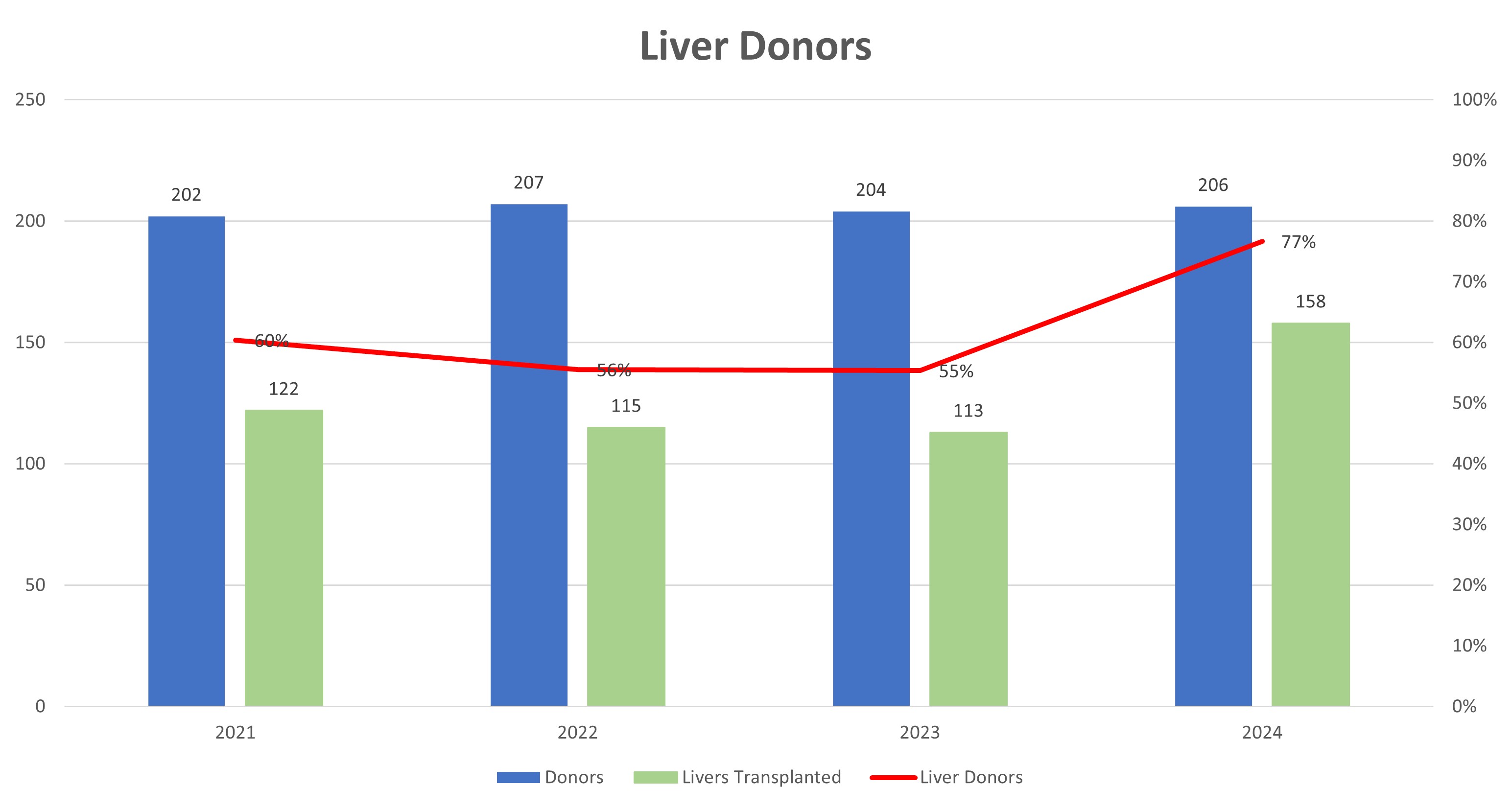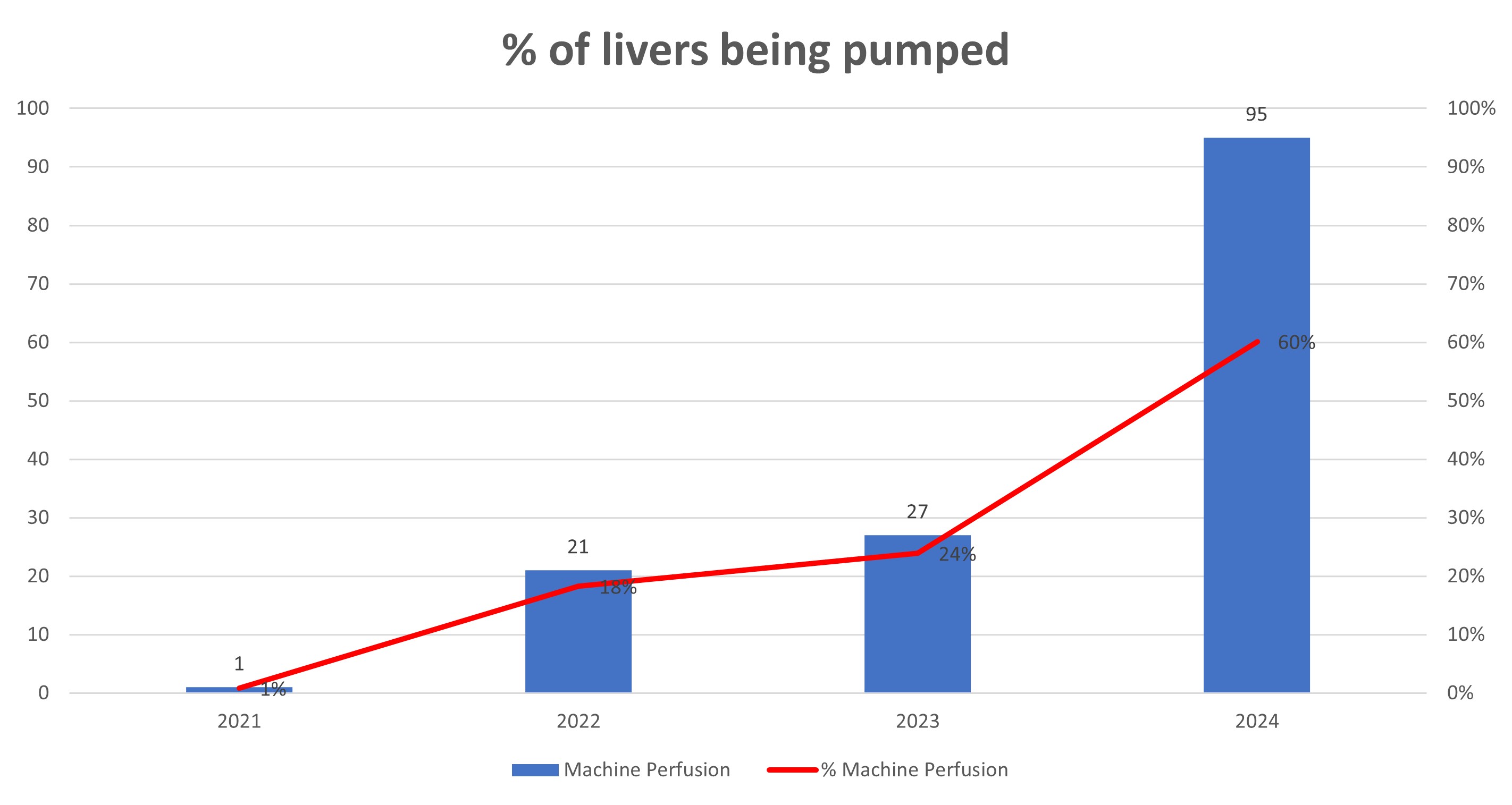The benefit of an organ procurement driven machine perfusion program
Elizabeth Shipman1.
1Organ , Nevada Donor Network, Las Vegas, NV, United States
Introduction: Historically, access to innovative organ preservation technologies like machine perfusion has been limited to high-volume transplant centers with institutional resources and influence. This creates disparities in utilization and access, especially for regional centers that serve diverse and underserved populations. Organ procurement organizations (OPOs) typically only gain access to such technology once it becomes commercially available, further delaying equitable distribution.
Method: Over two years, the OPO collaborated with a perfusion device manufacturer to develop an implementation pathway. Upon securing dedicated access to a perfusion machine, the program was launched within one month. This included extensive training for surgical teams on organ initiation and transplant center staff on liver removal, as well as laboratory validation for point-of-care iStat testing during transport. Two full-time device specialists from the OPO traveled with the machine to ensure safe and effective use.
Results: Since implementation, 10 of 17 adult liver transplant centers in the region have accepted livers preserved using OPO-perfusion, many of which had not previously participated in machine-perfused organ transplants.


Conclusion: This OPO-led model demonstrates that machine perfusion technology housed and operated by OPOs can democratize access, increase organ utilization, and promote regional equity. While the cost per case may increase, the shared infrastructure reduces individual transplant center expenses and allows lower-volume centers to participate in advanced preservation strategies. This model presents a replicable framework for other regions aiming to close the gap in transplant access and innovation.
[1] Machine perfusion
[2] Organ procurement organization
[3] Liver perfusion
[4] Normothermic regional perfusion